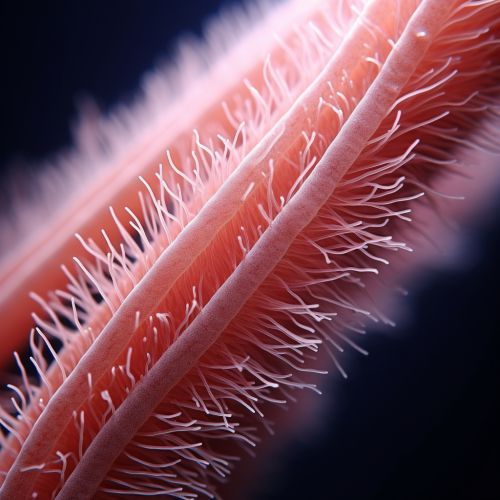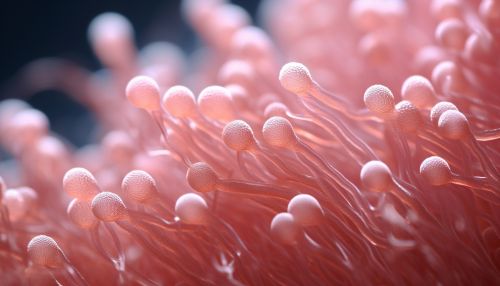Bacillus subtilis
Introduction
Bacillus subtilis, also known as the hay bacillus or grass bacillus, is a Gram-positive, catalase-positive bacterium, found in soil and the gastrointestinal tract of ruminants and humans. A member of the genus Bacillus, B. subtilis is rod-shaped, and can form a tough, protective endospore, allowing it to tolerate extreme environmental conditions.


Classification and Naming
Bacillus subtilis is a species of the genus Bacillus. The genus name 'Bacillus' derives from the Latin word 'baculus', meaning 'a small rod', referring to the shape of the bacteria. The specific epithet 'subtilis' comes from the Latin word 'subtilis', meaning 'fine, delicate, or subtle', possibly referring to the organism's ability to form subtle, fine colonies on agar plates.
Structure and Morphology
Bacillus subtilis is a rod-shaped bacterium, approximately 4-10 micrometers in length and 0.25-1.0 micrometer in diameter. It has a single, circular chromosome, and can form a tough, protective endospore, allowing the bacterium to tolerate extreme environmental conditions. The endospore is formed at a defined position in the cell, and its formation is governed by a complex regulatory mechanism.
Physiology and Metabolism
Bacillus subtilis is a facultative anaerobe, meaning it can grow in both the presence and absence of oxygen. It is capable of utilizing a variety of carbon sources, including sugars, amino acids, and purines. B. subtilis can also produce a variety of enzymes, including proteases, amylases, and cellulases, which allow it to degrade a wide range of substrates.
Genomics
The genome of B. subtilis is a single, circular chromosome of approximately 4.2 million base pairs. It contains approximately 4,100 genes, of which about 2,700 are known to be functional. The genome also contains a number of mobile genetic elements, including transposons and prophages.
Ecology
Bacillus subtilis is commonly found in soil and vegetation, and is also a normal inhabitant of the gastrointestinal tract of ruminants and humans. It can form biofilms, which are complex, structured communities of bacteria adhering to a surface. These biofilms allow B. subtilis to survive in harsh environmental conditions, and also play a role in its interaction with other organisms.
Role in Biotechnology
Bacillus subtilis is widely used in biotechnology due to its ability to secrete large amounts of enzymes. It is used in the industrial production of enzymes such as proteases and amylases, and is also used in the production of antibiotics and other bioactive compounds.
Pathogenicity
While Bacillus subtilis is generally considered a harmless organism, it has been associated with a number of human infections, including bacteremia, endocarditis, and meningitis. However, these infections are rare and are usually associated with immunocompromised individuals.
